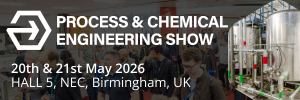Water treatment trial by SPS hailed a success
The client was trialling different chemical dosing set ups on actual water, running the tests for several weeks to generate data for a thorough review.
For the pilot, SPS was tasked with ensuring its solution included a flowmeter, pH probe, chemical reactions tank – which included dedicated mixers, a settlement tank and a sludge tank - and it treated an initial flow rate of approximately 1 m3/hr.
To satisfy this request, one of its integrated iHB10 lamella clarifier units was installed on site.
The lamella clarifier uses a series of inclined plates, which provide a large effective settling area for a relatively small footprint.
This was ideal for this project where the solids loading was variable and solids sizing was fine. The inlet flow entered the mix tank where the coagulant was added, together with pH correction for optimum performance.
The water was then overflowed into another mix tank where polymer was added, and the chemically treated water then entered the clarifier itself.
The solid particles settled on the plates and accumulated in collection hoppers at the bottom of the unit.
The sludge was then drawn off at the bottom of the hoppers and the clarified liquid exited the unit at the top over a weir.
The coagulation and flocculation steps of the treatment process were important in promoting the effective removal of solid material suspended in the water.
In coagulation, the process involved the addition of a coagulant that destabilises the charged particles, which were non-settleable, whilst flocculation involvef a similar destabilisation process that was achieved through physical mixing and adding organic polymers.
Although the project was confidential, SPS’ equipment proved very versatile in its applications and critical parameters could easily be adjusted to provide continuous real time data and results. The other benefit of the pilot plant was that any set up could be easily repeated to generate further data to satisfy the trial.
The SPS unit was factory tested before it was dispatched, minimising time spent on site for installation and commissioning. With all of the treatment components being contained in one unit, the iHB10 had a much smaller footprint than a solution with separate treatment units for each process stage, saving precious space on site.
Due to this special trial being run on a long term hire, various adjustments to the dosing rates of the chemicals being trialled were made. The equipment gathered sufficient data and evaluated the effectiveness of any changes in dosing rates, performance, sludge production and consistency. It also allowed SPS’ client to continually evaluate the plant performance in response to these adjustments. Data from that trial was used to optimise the full-scale treatment design.
David Gaskill, proposal manager at SPS, said: “Our client has been very pleased with the performance and flexibility of the unit.
“It has allowed them to make calculated and strategic changes to the chemistry and flow through the unit, running a trial for a week or so before the next change is made. The data for this is invaluable for the performance of the overall process and from this, the results can easily be scaled up to provide essential design data to optimise the full-scale plant.”












